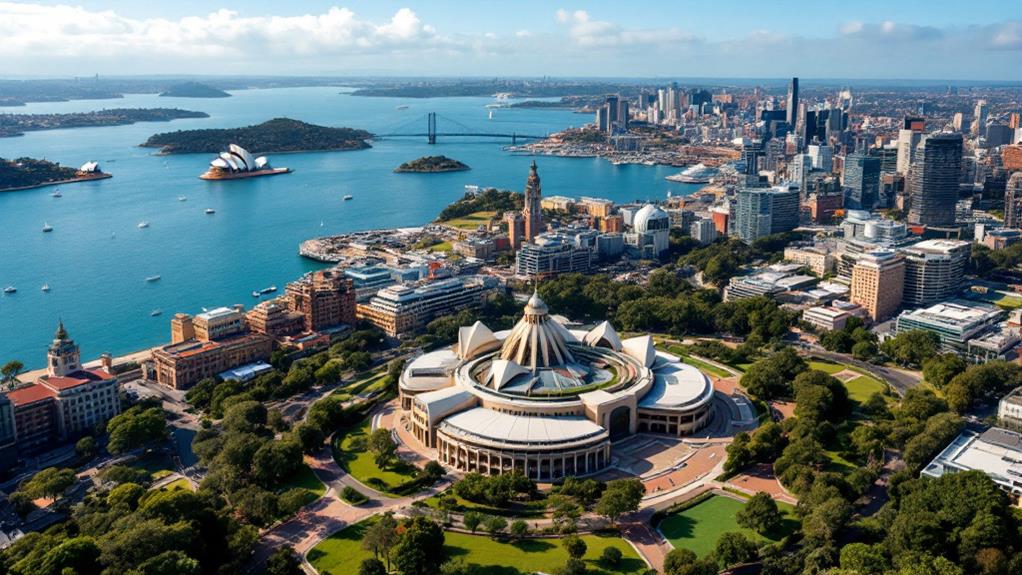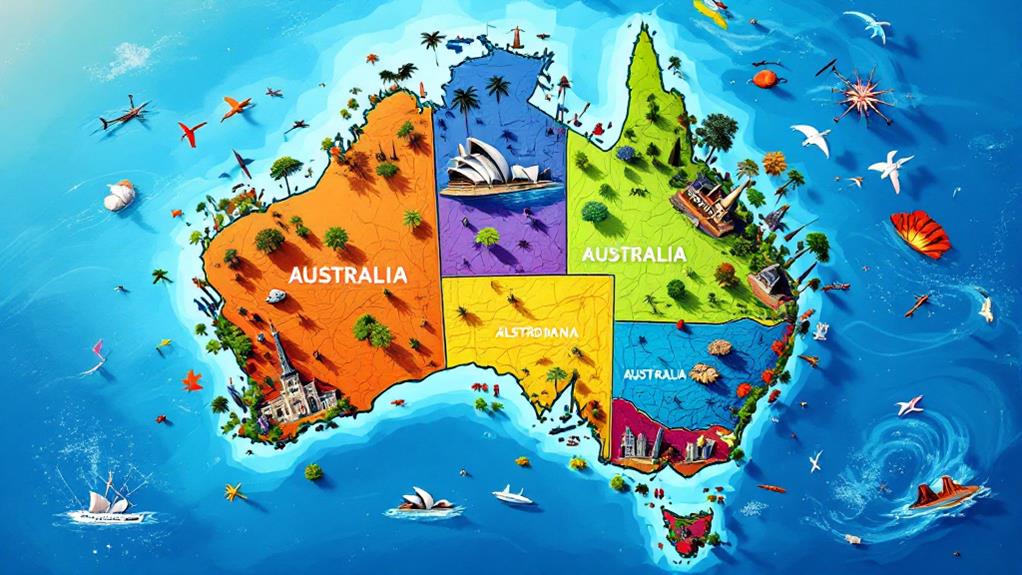Why Is Canberra the Capital of Australia? The Decision Behind the Capital City
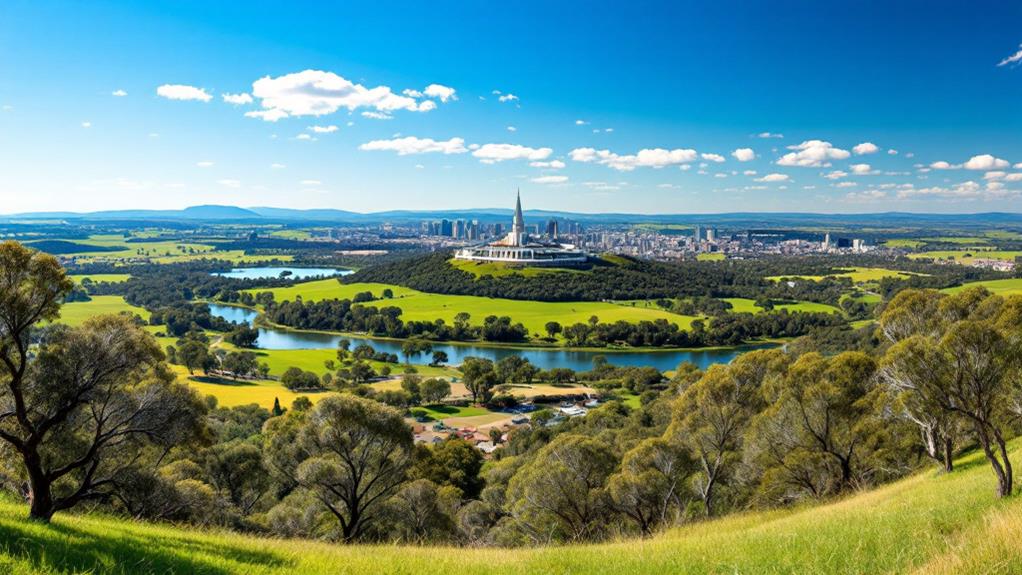
Canberra became the capital of Australia through a strategic compromise designed to balance the rivalry between Sydney and Melbourne. As part of the Australian Constitution, the capital had to be at least 100 miles from Sydney. After extensive debates, the Yass-Canberra area was selected in 1908 for its neutral location, favorable climate, and access to clean water. Walter Burley Griffin's groundbreaking city design, emphasizing green spaces, further solidified Canberra's role as a planned city. The name "Canberra," meaning "meeting place" from Aboriginal origins, was chosen to symbolize unity. There's more to uncover about its unique establishment and growth expedition.
The Federation and Early Debates
How did the Federation lead to the selection of Canberra as Australia's capital? When the Federation of Australian colonies took place on January 1, 1901, it sparked the need for a national capital, distinct from the vibrant cities of Sydney and Melbourne. The constitution required this capital to be at least 100 miles from Sydney, initiating a heated debate over its location. With more than 60 potential sites proposed, the discussions were intense and often contentious.
Initially, sites like Bombala and Tumut gained traction. However, the Yass-Canberra area emerged as a compromise, bridging the gap between competing interests. New South Wales pushed for a location closer to Sydney, emphasizing practical concerns like clean air and a reliable water supply. These factors made Yass-Canberra a viable contender, effectively addressing some of the disputes that arose during the selection process.
The decision was cemented when the Seat of Government Bill passed in October 1908. This legislation confirmed Canberra as the national capital, ultimately resolving the long-standing debates over its location. The choice of Canberra reflected a balance of geographical and environmental considerations, ensuring it met the criteria set forth by the Federation.
Criteria for Capital Selection
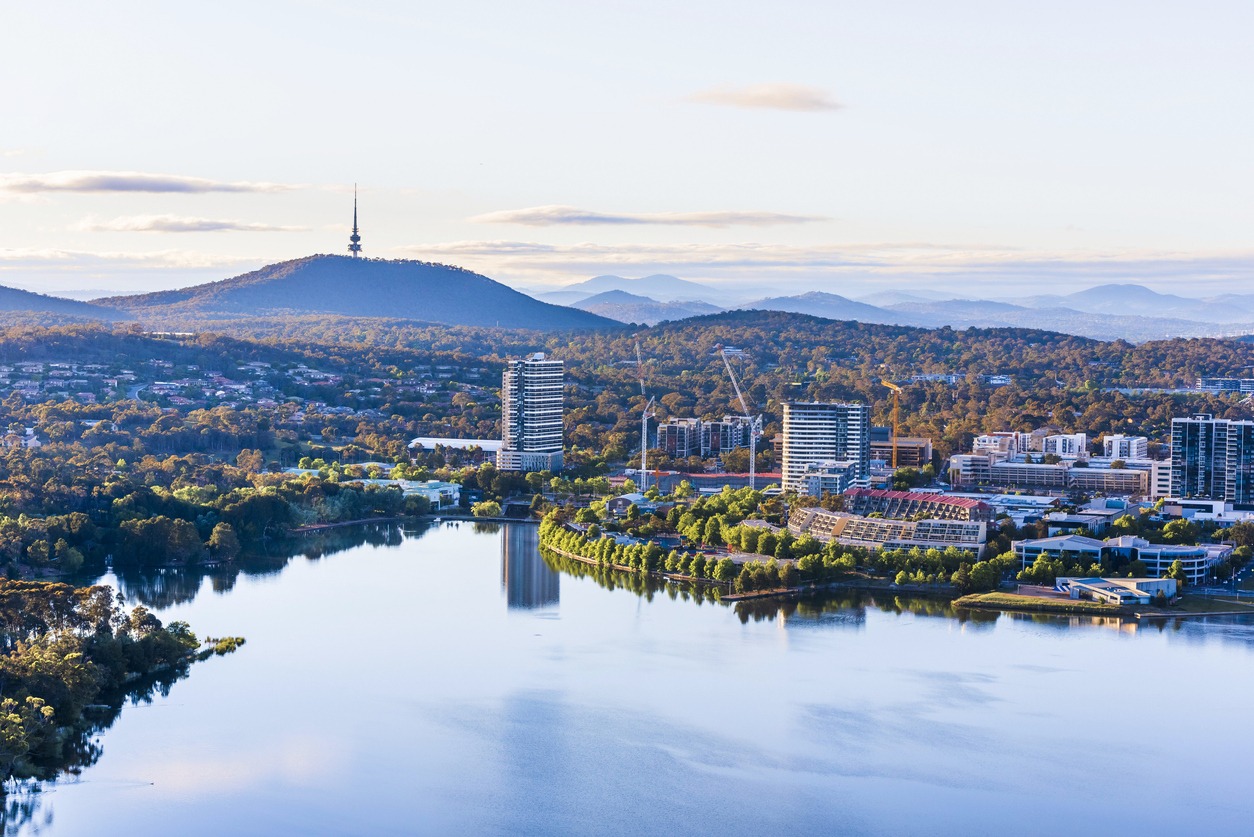
When selecting Australia's capital, several key criteria guided the decision-making process. Initially, the capital had to be at least 100 miles away from Sydney to guarantee no single state, like New South Wales, held undue sway over the federal government. Canberra, located in the Australian Alps, emerged as a promising candidate, partly due to its climate considerations. Its cooler temperatures and clean air were attractive for those advocating for a healthy living environment.
During the site selection, the purity of water sources and the availability of suitable building materials were also carefully assessed. These factors were fundamental to guaranteeing a sustainable environment for the new capital. Accessibility played a significant role, too. Locations along the Sydney-Melbourne railway were preferred, facilitating ease of transportation and communication. This connectivity was critical for the effective functioning of the federal government.
Ultimately, Canberra's selection as the capital was a compromise, balancing the interests of New South Wales with the need for neutrality. By meeting these diverse criteria, Canberra was chosen as the ideal site, reflecting a strategic and well-considered decision-making process in the establishment of Australia's capital.
Political Compromises and Agreements
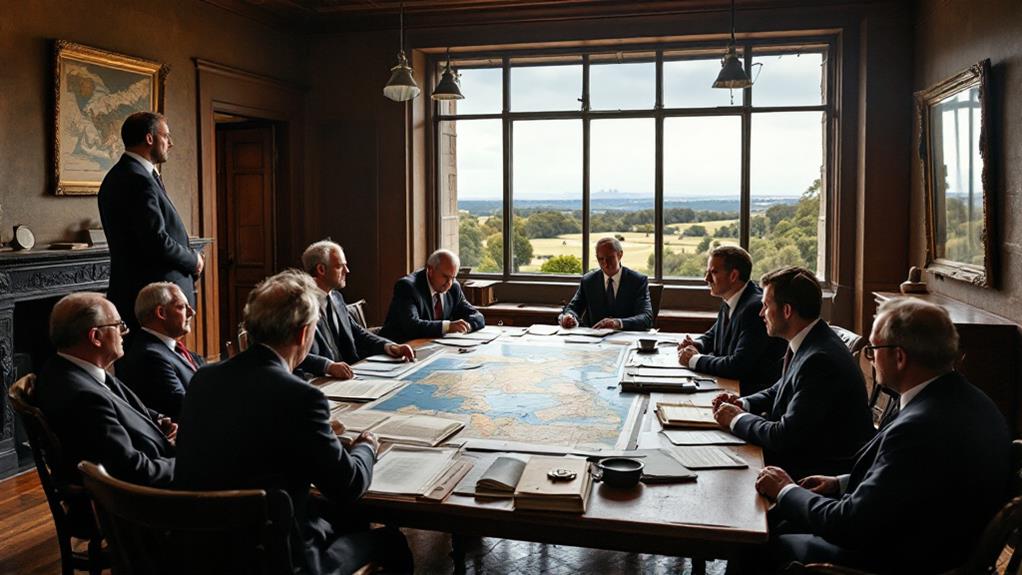
What led to Canberra's establishment as Australia's capital? Well, it was a result of a national political compromise. Sydney and Melbourne were rival cities, each vying to become the capital of Australia. Neither city could agree on the other taking the title of Federal Capital, which led to a deadlock. To resolve this, the government sought a neutral location, resulting in Canberra's selection in 1908. This choice was intended to eliminate the political rivalry and provide an unbiased ground for the federal government.
At the outset, the New South Wales government opposed Dalgety, the initial proposed site, due to its distance from Sydney. This opposition led to the Yass-Canberra region being chosen as a more acceptable compromise. Its proximity to Sydney and favorable environmental conditions, like clean air, made it an ideal choice. An agreement was reached, and the Seat of Government Bill passed in October 1908, officially designating Canberra as the capital and the Federal Capital Territory.
As part of the agreement, New South Wales ceded land for a seaport at Jervis Bay. This addressed concerns about Canberra's inland location, ensuring the capital remained accessible and strategically positioned.
Walter Burley Griffin's Vision
Walter Burley Griffin's vision for Canberra was both groundbreaking and ambitious, transforming the city into a masterpiece of urban design. You can thank both him and Marion Mahony Griffin for winning the 1912 design competition, which was no small feat. They proposed a geometric layout that welcomed the natural landscape, using a wheel-and-spoke pattern that cleverly incorporated notable topographical features. Lake Burley Griffin became a central element of this design, harmonizing with the surrounding mountains to create a stunning and functional capital city.
Griffin's urban planning foresaw a population of 25,000, yet by 2020, over 400,000 people called Canberra home. This growth underscores the foresight and adaptability of his plan. You can still see the extensive green spaces and nature reserves he included, reflecting the garden city movement's ideals of weaving natural vegetation into urban environments. This focus on green spaces guaranteed a harmonious blend of nature and city life.
Incorporating axes aligned with significant landmarks, Griffin's design achieved a visually striking and organized city layout. Today, this vision continues to influence urban planning, showcasing Griffin's lasting impact on Canberra's development as a dynamic capital city.
Naming the Capital
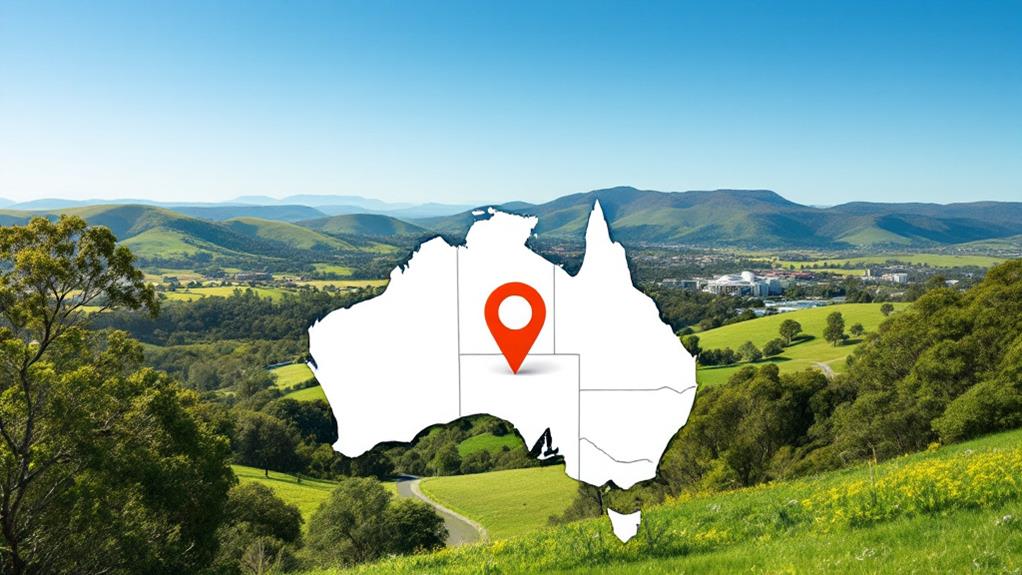
On March 12, 1913, over 3,000 locals and military personnel gathered for the official naming ceremony of Australia's capital. This event was a significant moment in the history of Australia's Federation. The name "Canberra" was disclosed, chosen for its Aboriginal roots, meaning "meeting place." This reflects the city's role as a central hub for governance and unity in Australia.
Lady Denman, the wife of the then-Governor-General, had the honor of announcing the name. She emphasized its pronunciation, ensuring everyone heard clearly. The name was meaningful, chosen not only for its local relevance but also for its sentimental connection to the area's indigenous heritage. The selection process was extensive, with humorous alternatives considered but ultimately rejected for lacking the same depth of meaning.
The naming of Canberra marked the culmination of debates and decisions that began with Australia's Federation in 1901. Determining the location and name of the capital was essential to establishing a distinct national identity. Canberra's naming was more than just a label; it was a nod to the city's importance as a meeting place for all Australians, bridging past traditions with future aspirations.
Canberra's Growth and Development
Canberra's growth and development have been remarkable, transforming it from a newly established capital into a thriving metropolitan hub. Established in 1913 after a design competition won by Walter Burley Griffin and Marion Mahony Griffin, Canberra was envisioned as a modern, planned city harmonizing with its natural surroundings. The city's population boomed post-World War II, with an over 50% increase every five years from 1955 to 1975, driven by urban development and government relocations from Melbourne.
Several key infrastructure projects have played an essential role in shaping Canberra's urban landscape and cultural identity:
- Lake Burley Griffin: Completed in 1964, this centerpiece reflects the city's planned design and fosters recreational and cultural activities.
- National Gallery: Opened in 1982, it highlights Canberra's commitment to cultural growth and serves as a national cultural landmark.
- Molonglo Valley Development: Initiated in 2010, it showcases Canberra's dedication to sustainable urban growth, applying new urbanism principles.
Cultural and Governmental Significance

As Australia's capital, Canberra plays an essential role in both the nation's governance and cultural landscape. At its political heart, Canberra hosts critical government institutions like Parliament House, the High Court, and Government House. These institutions underscore its significance in shaping national policies and governance. The city, chosen in 1908 as a compromise between Sydney and Melbourne, meets the constitutional requirement of being at least 100 miles from Sydney, establishing its unique status as the capital.
Walter Burley Griffin's design of Canberra seamlessly blends nature with urban infrastructure, creating a city that emphasizes aesthetics and public spaces. This thoughtful design reflects the importance of Canberra not just as a seat of government but as a lively cultural hub. The city is home to numerous cultural institutions, including the Australian War Memorial, National Gallery, and National Museum. These institutions play a key role in preserving and celebrating Australia's rich heritage and history.
Moreover, Canberra's role in international diplomacy is highlighted by its many foreign embassies and international organizations. This enhances its global significance, making it a central point for both domestic governance and international relations.

